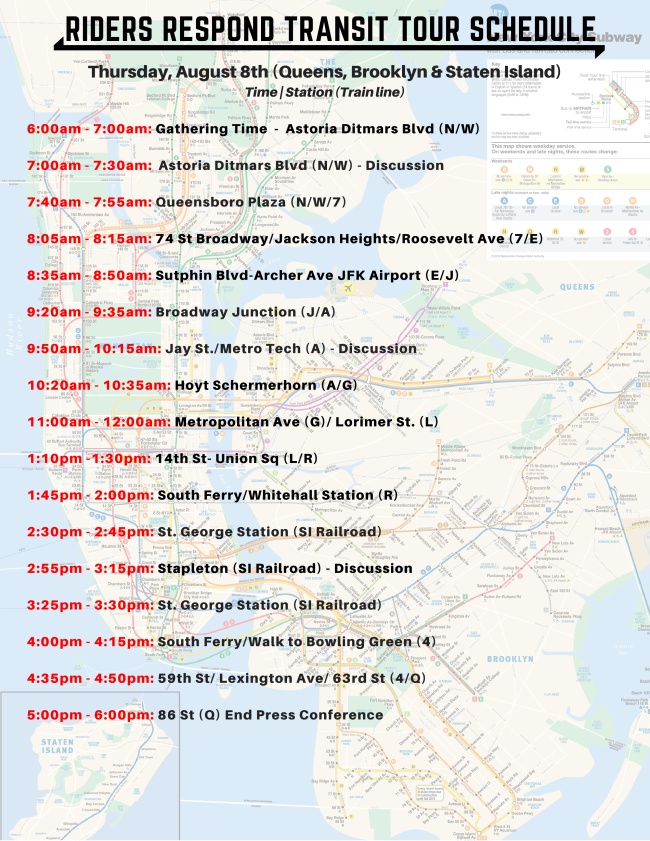
Flyer Provided By: Office of Council Member Ydanis Rodriguez
Aug. 7, 2019 By Allie Griffin
Queens straphangers have the chance to voice their opinions and feedback on New York City’s subway directly to elected officials Thursday as part of the third annual “24-Hour Transit Tour.”
For two days from 6 a.m. to 6 p.m., the city’s Council Transportation Committee Chair Ydanis Rodriguez, Council Speaker Corey Johnson and other elected officials, advocate groups and volunteers will ride station to station across the five boroughs to survey subway riders and access the transit system’s conditions.
“The Annual Transit Tour allows us to hear directly from commuters regarding the state of our subway transit system. Last year, we surveyed hundreds of New Yorkers, the feedback received gave us insight into what we needed to address and exposed many of the issues affecting our straphangers,” Rodriguez said. “This year, we will once again take to the subways and speak with hundreds more, in order to determine the most pressing issues impacting riders.”
Queens residents and riders will have the opportunity to voice their concerns about the city’s underground transit system on day two, Aug. 8. The data gathered from the two days will be presented at a future Committee on Transportation hearing.
“In January of this year, we held a Legislative joint hearing where the President and Managing Director of the MTA testified about the importance of including their funding in the FY19-20 Executive Budget. This is why this 24hr Transit Tour, led by Councilmember Ydanis Rodriguez, is a great opportunity to hear from my neighbors about their experience and ways that we can hold the MTA accountable to the repairs we desperately need,” State Senator Jessica Ramos said.
Day two of the transit tour will begin in Queens. It starts at 6 a.m. at the Astoria Ditmars Boulevard N W station with a discussion.

Transit Schedule Day Two of the Tour | Council Member Ydanis Rodriguez
“I am excited to once again join my dear colleague and Transportation Chair Ydanis Rodriguez to discuss the needs of western Queens commuters,” said Council Member Costa Constantinides, District 22. “This enables us to hear directly from riders, to get a better on-the-ground understanding of how our transit system can improve.”






